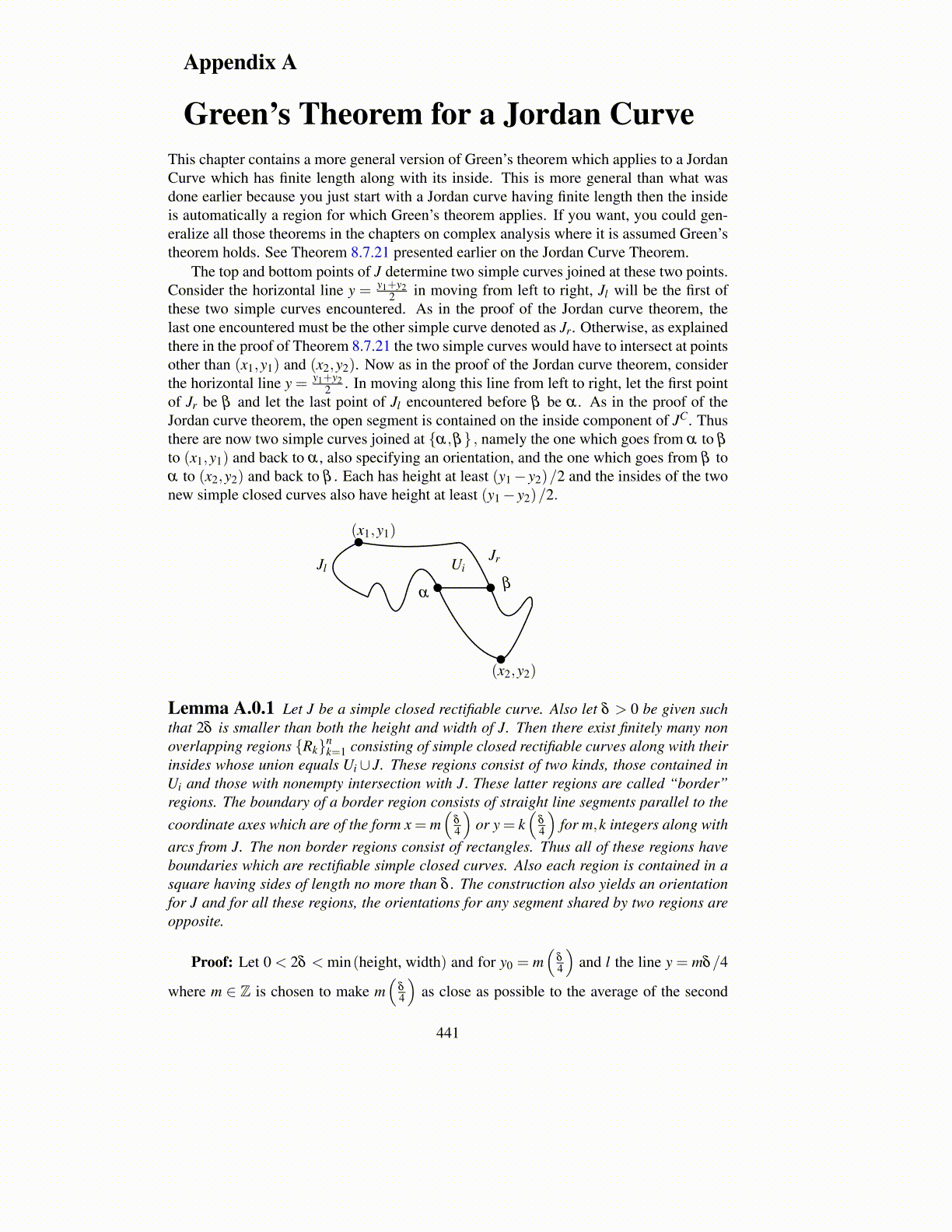
Appendix A
Green’s Theorem for a Jordan CurveThis chapter contains a more general version of Green’s theorem which applies to a JordanCurve which has finite length along with its inside. This is more general than what wasdone earlier because you just start with a Jordan curve having finite length then the insideis automatically a region for which Green’s theorem applies. If you want, you could gen-eralize all those theorems in the chapters on complex analysis where it is assumed Green’stheorem holds. See Theorem 8.7.21 presented earlier on the Jordan Curve Theorem.
The top and bottom points of J determine two simple curves joined at these two points.Consider the horizontal line y = y1+y2
2 in moving from left to right, Jl will be the first ofthese two simple curves encountered. As in the proof of the Jordan curve theorem, thelast one encountered must be the other simple curve denoted as Jr. Otherwise, as explainedthere in the proof of Theorem 8.7.21 the two simple curves would have to intersect at pointsother than (x1,y1) and (x2,y2). Now as in the proof of the Jordan curve theorem, considerthe horizontal line y = y1+y2
2 . In moving along this line from left to right, let the first pointof Jr be β and let the last point of Jl encountered before β be α . As in the proof of theJordan curve theorem, the open segment is contained on the inside component of JC. Thusthere are now two simple curves joined at {α,β} , namely the one which goes from α to β
to (x1,y1) and back to α , also specifying an orientation, and the one which goes from β toα to (x2,y2) and back to β . Each has height at least (y1− y2)/2 and the insides of the twonew simple closed curves also have height at least (y1− y2)/2.
(x2,y2)
(x1,y1)
αβ
UiJrJl
Lemma A.0.1 Let J be a simple closed rectifiable curve. Also let δ > 0 be given suchthat 2δ is smaller than both the height and width of J. Then there exist finitely many nonoverlapping regions {Rk}n
k=1 consisting of simple closed rectifiable curves along with theirinsides whose union equals Ui ∪ J. These regions consist of two kinds, those contained inUi and those with nonempty intersection with J. These latter regions are called “border”regions. The boundary of a border region consists of straight line segments parallel to thecoordinate axes which are of the form x = m
(δ
4
)or y = k
(δ
4
)for m,k integers along with
arcs from J. The non border regions consist of rectangles. Thus all of these regions haveboundaries which are rectifiable simple closed curves. Also each region is contained in asquare having sides of length no more than δ . The construction also yields an orientationfor J and for all these regions, the orientations for any segment shared by two regions areopposite.
Proof: Let 0 < 2δ < min(height, width) and for y0 = m(
δ
4
)and l the line y = mδ/4
where m ∈ Z is chosen to make m(
δ
4
)as close as possible to the average of the second
441